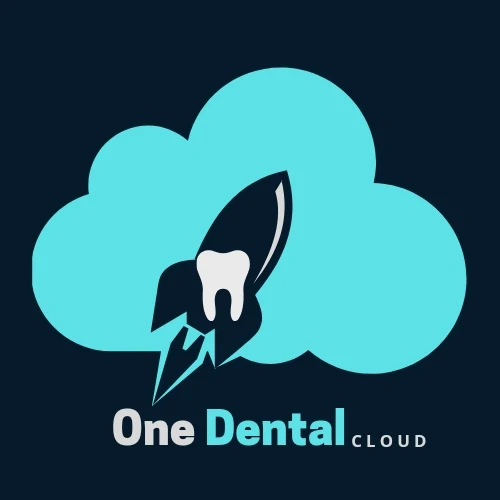enhancement course - digital dentistry and HTML language
.
NExt Dental exams
never stop reading .
Timed Pop-up Widget Sidebar
Title: Introduction to HTML for Digital Dentistry Enhancement
Session Overview:
This learning session aims to provide dental students and professionals with a foundational understanding of basic HTML code programming and its applications in digital dentistry. HTML (Hypertext Markup Language) is a crucial skill for creating and enhancing websites, which can be used to showcase dental practices, share educational content, and improve patient communication. Participants will gain hands-on experience in creating web content relevant to the field of dentistry.
Session Outline:
1. **Introduction to HTML (15 minutes)**
- Explanation of HTML and its role in web development.
- Overview of key HTML elements, tags, and attributes.
- Importance of HTML in digital dentistry for building informative and interactive online platforms.
2. **Setting Up Your Environment (15 minutes)**
- Introduction to text editors for coding (e.g., Notepad++, Visual Studio Code).
- How to create and save an HTML file.
- Basics of organizing project folders and files.
3. **Creating a Simple Dental Practice Website (30 minutes)**
- Building the structure of a dental practice website using HTML.
- Implementing headings, paragraphs, lists, and images.
- Adding links to external resources (e.g., dental association websites, research articles).
4. **Enhancing User Experience (20 minutes)**
- Introduction to HTML forms for patient appointment requests.
- Creating input fields for patient names, contact information, and preferred dates.
- Exploring buttons and form submission.
5. **Adding Interactivity (20 minutes)**
- Incorporating basic JavaScript for interactive elements (e.g., image pop-ups, tooltips).
- Demonstrating the use of JavaScript libraries to enhance user engagement.
6. **Responsive Design for Mobile Devices (15 minutes)**
- Importance of responsive design in reaching a broader audience.
- Introduction to CSS (Cascading Style Sheets) for styling HTML elements.
- Adjusting webpage layout for various screen sizes.
7. **Showcasing Educational Content (20 minutes)**
- Embedding videos, animations, and interactive 3D dental models using HTML5.
- Discussing the integration of multimedia for patient education and case presentations.
8. **Q&A and Further Resources (10 minutes)**
- Addressing participant questions and clarifications.
- Providing recommended resources for further learning and practice.
By the end of this session, participants will have a solid foundation in creating and enhancing web content using HTML, enabling them to leverage digital platforms effectively for dental practice promotion, patient education, and professional development.
Join follow share like invite comment connect us on telegram digital Dental network
HTML, which stands for Hypertext Markup Language, is a fundamental language used in web development to create the structure and content of web pages. It serves as the building block that allows developers to define the layout, text, images, links, and other elements that make up a webpage. HTML plays a pivotal role in shaping the visual and functional aspects of websites. Here's a brief explanation of HTML and its role in web development:
1. **Markup Language:** HTML is a markup language, not a programming language. It uses a system of tags (enclosed in angle brackets, like <tagname>) to mark up content, indicating how the content should be displayed or structured on a webpage.
2. **Defining Structure:** HTML provides the structural framework for a webpage. It allows developers to create headings, paragraphs, lists, tables, and more, which organize the content in a coherent manner.
3. **Text Formatting:** HTML tags are used to format text, such as making text bold (<strong>), italic (<em>), underlined (<u>), or emphasized (<em>).
4. **Hyperlinks:** HTML enables the creation of hyperlinks (<a>) that connect different web pages, allowing users to navigate between them. This is essential for creating a seamless browsing experience.
5. **Images and Multimedia:** HTML allows the insertion of images (<img>), audio (<audio>), video (<video>), and other multimedia elements, enhancing the visual appeal and interactivity of a webpage.
6. **Forms and User Input:** HTML provides form elements (<form>, <input>, <select>, etc.) for collecting user input, such as login credentials, contact details, and more. This is crucial for interactions like submitting queries or making appointments.
7. **Accessibility:** HTML includes features to enhance web accessibility, making it possible for people with disabilities to access and navigate web content using screen readers and assistive technologies.
8. **Semantics and SEO:** HTML offers semantic elements (e.g., <header>, <nav>, <footer>, <article>) that convey the meaning and structure of content to both developers and search engines. This contributes to better search engine optimization (SEO) and improved page ranking.
9. **Responsive Design:** HTML, in combination with CSS (Cascading Style Sheets), is used to create responsive web designs that adapt to different screen sizes and devices, ensuring a consistent user experience across desktops, tablets, and smartphones.
10. **Integration with Other Technologies:** HTML can be combined with other technologies like CSS for styling and JavaScript for interactivity. This trio forms the core of modern web development, enabling dynamic and feature-rich web applications.
In summary, HTML is the foundational language of the web that allows developers to create structured, interactive, and visually appealing web pages. It plays a vital role in defining the content and layout of websites, making it an essential skill for anyone involved in web development.
learning html download mobile app from Google Play Store
HTML Elements, Tags, and Attributes: An Overview
HTML (Hypertext Markup Language) relies on a system of elements, tags, and attributes to structure and format content within a webpage. Understanding these components is crucial for creating well-organized and visually appealing web content. Here's an overview of HTML elements, tags, and attributes:
1. **HTML Elements:**
HTML elements represent different types of content or structure within a webpage. They consist of an opening tag, content, and a closing tag. For example:
```html
<h1>This is a heading</h1>
<p>This is a paragraph of text.</p>
```
2. **HTML Tags:**
Tags are used to define HTML elements. They are enclosed in angle brackets and can be paired (opening and closing) or self-closing. Tags consist of the tag name and any associated attributes. Examples:
- Opening and closing tag: `<h1>This is a heading</h1>`
- Self-closing tag: `<img src="image.jpg" alt="An image">`
3. **HTML Attributes:**
Attributes provide additional information about an HTML element and are always specified in the opening tag. They are comprised of a name and a value, separated by an equals sign. Examples:
```html
<a href="https://www.example.com">Visit our website</a>
<img src="logo.png" alt="Company Logo">
```
4. **Commonly Used HTML Elements and Tags:**
- Headings: `<h1>`, `<h2>`, `<h3>`, ...
- Paragraphs: `<p>`
- Lists: `<ul>`, `<ol>`, `<li>`
- Links: `<a>`
- Images: `<img>`
- Divisions: `<div>`
- Spans: `<span>`
- Forms: `<form>`, `<input>`, `<textarea>`, `<button>`
- Tables: `<table>`, `<tr>`, `<th>`, `<td>`
- Semantic Elements: `<header>`, `<nav>`, `<footer>`, `<article>`
5. **Nesting and Hierarchy:**
HTML elements can be nested within each other to create a hierarchical structure. Proper indentation and organization enhance code readability. Example:
```html
<div>
<h2>Introduction</h2>
<p>This is a paragraph about...</p>
</div>
```
6. **Void (Self-Closing) Elements:**
Some elements are self-closing and do not require a closing tag. They use the self-closing format or the void tag syntax. Example:
```html
<img src="icon.png" alt="An icon">
<input type="text" name="username" placeholder="Enter your username">
```
Understanding HTML elements, tags, and attributes is essential for creating structured and visually appealing web pages. These building blocks form the foundation of web development, enabling developers to create content-rich and interactive websites.
HTML plays a pivotal role in digital dentistry by enabling the creation of informative and interactive online platforms that enhance patient communication, education, and practice promotion. Here's why HTML is important for building such platforms in the field of dentistry:
1. **Patient Education and Engagement:** HTML allows dental professionals to create visually engaging and interactive educational content. They can develop informative articles, videos, animations, and 3D models that explain various dental procedures, oral hygiene practices, and treatment options. This empowers patients to make informed decisions about their oral health.
2. **Online Dental Resources:** With HTML, dental practices can develop comprehensive online resources, including dental care guides, FAQs, and articles on common oral health issues. These resources serve as valuable references for patients seeking reliable information and advice between dental appointments.
3. **Appointment Booking and Communication:** HTML-based forms and interactive elements enable patients to schedule appointments, provide medical history, and communicate their concerns online. This improves the efficiency of appointment booking and reduces administrative overhead for dental staff.
4. **Virtual Consultations:** HTML-driven platforms can facilitate virtual consultations, allowing patients to share images or videos of their dental issues and receive preliminary advice from dental professionals. This is especially valuable for initial assessments and follow-up discussions.
5. **Showcasing Services and Expertise:** Dental practices can create visually appealing websites using HTML to showcase their services, team members, and advanced technologies. Including testimonials and before-and-after images helps build trust and attract new patients.
6. **Patient Portals:** HTML-based patient portals provide secure access for patients to view their treatment plans, upcoming appointments, and digital X-rays. This enhances patient involvement in their dental care and fosters a sense of transparency.
7. **Case Studies and Success Stories:** HTML enables the creation of detailed case studies and success stories that highlight complex dental procedures and transformations. This not only demonstrates the expertise of the dental practice but also reassures potential patients.
8. **Interactive Treatment Simulations:** Dental professionals can use HTML to develop interactive simulations that illustrate treatment outcomes, helping patients visualize the potential results of procedures like teeth whitening, orthodontics, or dental implants.
9. **Health and Hygiene Guidelines:** HTML-driven platforms can provide guidelines for maintaining oral health and hygiene, along with personalized recommendations based on patients' specific dental conditions.
10. **Community Engagement:** HTML allows dental practices to create online forums, blogs, and social media integration to foster a sense of community among patients and encourage discussions about dental health.
Incorporating HTML in digital dentistry enables dental professionals to create a dynamic online presence that not only educates and informs but also engages patients in meaningful ways. By leveraging the power of HTML, dental practices can enhance patient care, promote their services, and establish strong relationships with their patient community.














Comments
Post a Comment